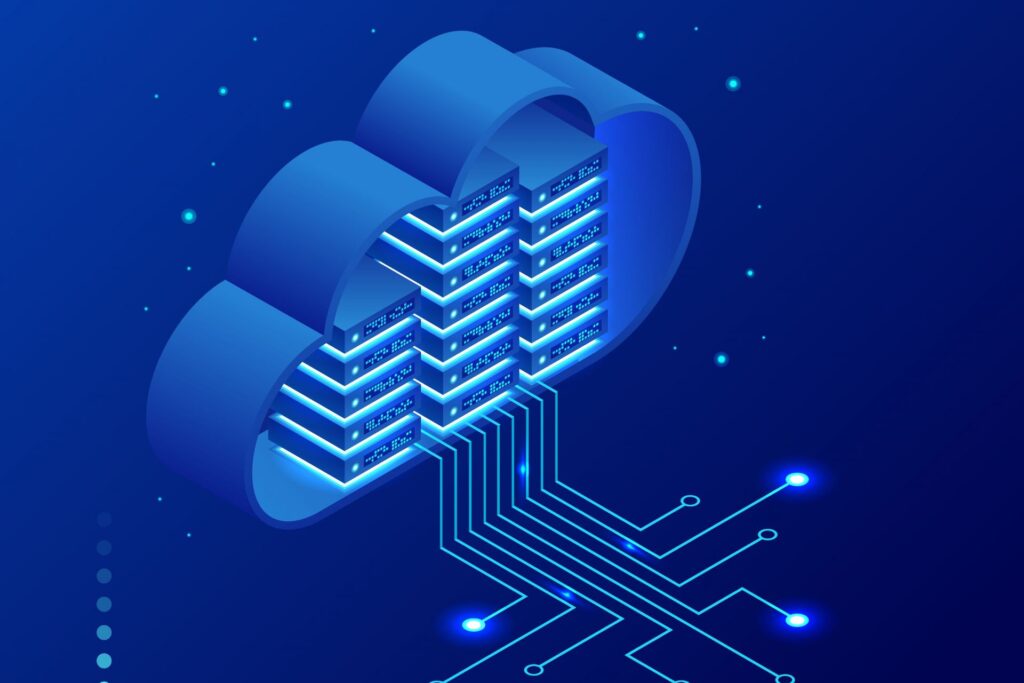
Necessity is the mother of invention. This well-worn adage has never been more apt than in the current climate of global uncertainty. To be precise, necessity is the mother of innovation. The coronavirus pandemic has occasioned every sector to reevaluate traditional models.
Technology – with a focus on the cloud – can help to weather the immediate challenge and also to kickstart societal and business innovation in the longer term. Testament to this is the Prime Minister’s call to action to major technology companies and the UK’s leading AI experts to help in the fight against the pandemic. In particular, tech players with the platform capability to get the right information and advice to millions of people.
As countries implement social distancing measures, there has been a huge spike in remote working and virtual customer support. Some organisations don’t have the infrastructure to accommodate this, and demand for cloud and SaaS platforms has shot up. Hybrid and multi-cloud hold great potential for arming businesses with the necessary agility and scalability to pivot quickly, navigate crises and build resilience; and they will increasingly grow in popularity. According to McAfee, global hybrid cloud adoption grew threefold in the previous year, while Allied Market Research estimates that the same market will generate $171.93 billion by 2025.
A digital wake-up call
As businesses of all sizes are hit with the economic fallout, it’s not too late to take action and tap into the advantages of harnessing hybrid and multi-cloud. With budgets squeezed, this offers an effective way to reduce overheads and supercharge operational efficiencies.
Multi-cloud combines microservices from several public cloud-hosting vendors, while hybrid cloud is a mix of public and private cloud architecture. There isn’t a ‘one size fits all’ approach, as businesses need to decide on the most appropriate cloud environment for their needs. Depending on specific priorities and objectives, extending select workloads to the cloud brings immediate productivity pay-offs. The hybrid approach offers seamless connectivity, interoperability and a more integrated network that can be scaled up or down fast to meet unexpected demand.
As businesses of all sizes are hit with the economic fallout, it’s not too late to take action and tap into the advantages of harnessing hybrid and multi-cloud
For those saddled with legacy systems, hybrid cloud is an effective way to transition in stages. It can underscore an incremental digital transformation journey, which involves introducing innovation at the same time as lowering reliance on legacy. Certain systems and data can be migrated to the cloud, while others (including very sensitive data) remain on-site.
Multi-cloud brings an additional benefit. By opting for more than one public cloud provider – where AWS, Google and Azure dominate the field – organisations can lessen the risks associated with counting on a sole vendor. Diversification is important, in case one provider experiences outages or other disruptions.
Why going ‘cloud-first’ makes good business sense
The cloud environment lends itself to deploying DevOps orchestration and intelligent automation to automate manual tasks, improve accuracy and lower response times. As several processes and web-based applications run simultaneously without human intervention, businesses can speed up the route to market of new products and services. By moving away from the rigidity of legacy systems, they gain the ability to adapt and stay flexible. This strengthens resilience in the face of unexpected micro or macro challenges.
The financial implications of shedding outmoded CapEx models are also compelling. The significant scale of public cloud servers makes it possible to store and process data at a lower cost than doing so in-house, and offers greater agility. Organisations are empowered to pick and choose from a selection of cloud services according to their needs at any given moment.
One thing is for certain – the way that organisations work has changed for good. Many have been shocked into action by the pandemic
Another big selling point of multi and hybrid cloud ecosystems is that they facilitate the use of sophisticated cognitive technologies that lend themselves to analysing large pools of disjointed data and making sense of it. To thrive and innovate, businesses must make use of data to inform decision making – by untethering previously inaccessible data from siloes, it’s possible to apply the processing power and speed of AI to gain high-quality, actionable insights.
Data-led transformation
With real-time data measurement and analysis of network health and resources, leaders gain full visibility across critical departments. Furthermore, with predictive analytics through machine learning and deep learning algorithms, they can uncover patterns in historical data to stay one step ahead. These insights can be used to hyper-personalise services to an unprecedented degree to aid customer retention.
For enterprises with a global footprint, multi-cloud allows them to remain compliant with the data protection and privacy regulations in different jurisdictions by selecting the best provider for each one. Hybrid also brings compliance benefits – organisations can embrace innovation while still safeguarding their most sensitive data by storing it on-prem. More open access to data has brought its own security concerns, which has certainly hindered wider public cloud adoption amongst those who face more stringent regulation.
Cloud migration needs its own set of cybersecurity layers, and that’s where AI comes in again. The self-learning nature of machine learning software can spot inconsistencies in data patterns and alert businesses to a threat before it can wreak damage. Similarly, data analytics technology can help businesses to map out how macro uncertainties could affect them, and plan how to mitigate those risks.
New beginnings on the horizon
One thing is for certain – the way that organisations work has changed for good. Many have been shocked into action by the pandemic, realising that they must design the right forward-thinking strategies now to survive the present turbulence and continue to grow afterwards.
The coming years will see even stronger adoption of multi and hybrid cloud but also of more intense development of the technologies that go alongside it, such as quantum computing and AI. Multi and hybrid cloud will be integral to accelerating digital transformation and driving R&D to propel more remarkable technologies into the mainstream.

Anurag Bhatia
Senior Vice President and Head of Europe at Mphasis


